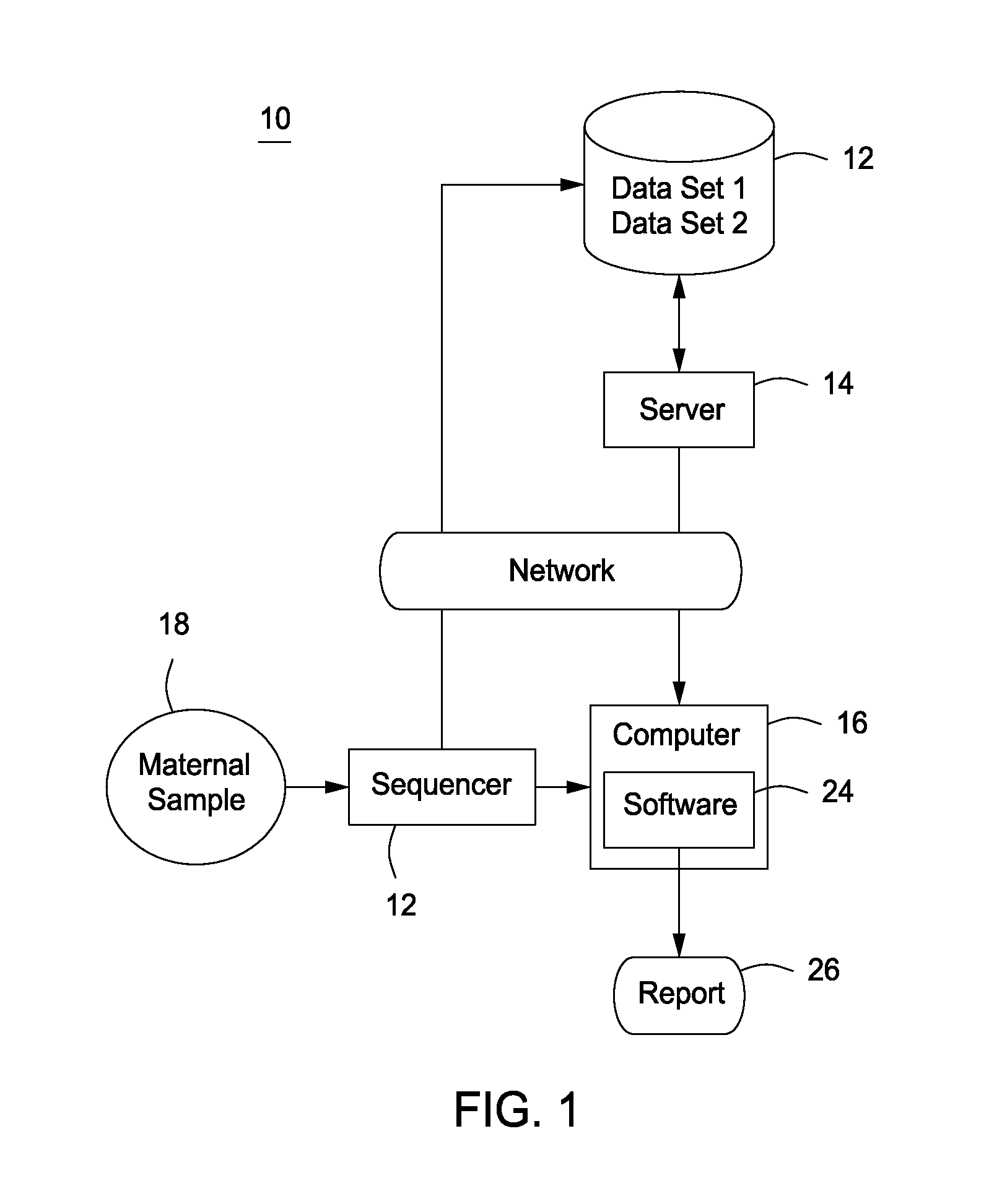Assay systems for detection of aneuploidy and sex determination
a technology of sex chromosome and detection system, which is applied in the field of detection of sex chromosome copy number for detection of aneuploidies and sex determination, can solve the problem of inherently inefficient methods
- Summary
- Abstract
- Description
- Claims
- Application Information
AI Technical Summary
Benefits of technology
Problems solved by technology
Method used
Image
Examples
example 1
Subjects
[0148]Subjects are prospectively enrolled upon providing informed consent under protocols approved by institutional review boards. Subjects are required to be at least 18 years of age, at least 10 weeks gestational age, and to have singleton pregnancies.
example 2
Analysis of Polymorphic Loci to Assess Percent Fetal Contribution
[0149]To assess fetal nucleic acid proportion in the maternal samples, assays are designed against a set of 192 SNP-containing loci on chromosomes 1 through 12, where two middle oligos differing by one base are used to query each SNP. SNPs are optimized for minor allele frequency in the HapMap 3 dataset. Duan, et al., Bioinformation, 3(3):139-41 (2008); Epub 2008 Nov. 9.
[0150]Oligonucleotides are synthesized by IDT and pooled together to create a single multiplexed assay pool. PCR products are generated from each subject sample as previously described. Briefly, 8 mL blood per subject is collected into a Cell-free DNA tube (Streck) and stored at room temperature for up to 3 days. Plasma is isolated from blood via double centrifugation and stored at −20C for up to a year. cfDNA is isolated from plasma using Viral NA DNA purification beads (Dynal), biotinylated, immobilized on MyOne™ C1 streptavidin beads (Life Technologi...
example 3
Analysis of PARs to Determine Aneuploidy
[0152]Because the sequences from the PAR region are found in both the X and Y chromosome, the dosage of the PAR regions will reflect a disomic level of sex chromosomes in both a normal male and normal female fetus. The level of sex chromosomes can be determined by using a reference chromosome and comparison of the genetic dosage of the PAR regions as compared to the dosage of a disomic reference chromosome.
[0153]The levels estimated are thus levels of the overall number of sex chromosomes, but do not distinguish between a Y chromosome and an X chromosome.
[0154]To estimate fetal chromosome dosage of the sex chromosome and a reference chromosome (e.g., any individual chromosome other than X), assays are designed against 576 non-polymorphic loci within the pseudoautosomal region and 576 non-polymorphic loci on one or more reference chromosomes. Each assay utilizes three locus-specific oligonucleotides: a left oligo with a 5′ universal amplificati...
PUM
| Property | Measurement | Unit |
|---|---|---|
| Tm | aaaaa | aaaaa |
| relative frequency | aaaaa | aaaaa |
| relative frequencies | aaaaa | aaaaa |
Abstract
Description
Claims
Application Information
 Login to View More
Login to View More - R&D
- Intellectual Property
- Life Sciences
- Materials
- Tech Scout
- Unparalleled Data Quality
- Higher Quality Content
- 60% Fewer Hallucinations
Browse by: Latest US Patents, China's latest patents, Technical Efficacy Thesaurus, Application Domain, Technology Topic, Popular Technical Reports.
© 2025 PatSnap. All rights reserved.Legal|Privacy policy|Modern Slavery Act Transparency Statement|Sitemap|About US| Contact US: help@patsnap.com



